After a long break (sorry) here is the next lesson in my Mom’s MTC. If you would like to know the details of how we implement these lessons in our home please read the first part of this post.
Charity
- Kindness
- Friendliness
- Gentleness
- Service
Song: “I’m Trying to be Like Jesus” #78 in The Children’s Song Book
Memory Scripture: John 13:35 “By this shall all men know that ye are my disciples, if ye have a love one to another.”
Books to Read Aloud: (choose one or two)
The Family Under the Bridge by Natalie Savage Carlson
Charlotte’s Web by E.B. White
The Whipping Boy by Sid Fleischman
The Little Mermaid by Hans Christen Anderson
Week One: Noticing Others
Scripture Stories
The Good Samaritan
Read Luke 10:25-37
Jesus told this story to teach his disciples about love. It is important that we show love to everyone, even if we don’t know them. The Levite and the Priest didn’t show love because they walked past the man and didn’t help him. Only the Samaritan, who stopped to help, showed real love. Help children understand that sometimes helping or loving others means that we have to put aside what we want and focus on what other people need. It also means that we need to learn to notice other people and pay attention to what they need. You may also want to role play this story in a modern day example, like kids on a play ground or a stranded car on the side of the road.
Questions to Talk About:
Have you ever seen anyone hurt?
How did it make you feel?
What did you do?
Why did the Levite or priest not stop to help the injured person?
Who did stop and why do you think they decided to help?
What would Jesus have done?
Can you think of a time when you didn’t help someone who needed your help?
Who do you know who needs help?
Activities:
Put Yourself in the Picture
Find a collection of books that has a people displaying a variety of emotions and situations. Have the children look at the pictures and have them explain how the people might be feeling, what they might be experiencing, etc. For example, if you show a picture of a family eating dinner you could talk about if they look happy or sad and why, what the food they are eating might taste like, if you think the room would be cold or hot, etc… The idea is to get them thinking about what it feels like to be another person. You could also do this activity by having the kids flip through magazines and cut out pictures. Old copies of the Ensign, New Era or Friend magazines would be perfect for this.
The Noticing Game
Place several objects out on a table or a tray. Instruct the children to look closely at the objects and try to remember what is there. Have them close their eyes and then take away one (or more) of the objects. Have them guess what is missing. The more similar the objects are (ie. All crayons but different colors) the harder it is and the more diverse they are (ie. a seashell, a feather and a crayon) the easier it is. Feel free to adapt the number of things and the type to the skill level of your children. For older children you could also have them look at a room, place, or person for several minutes and then later have them describe what they remember back to you or draw a picture of it.
Eye Contact Game
Have you ever noticed how if you make eye contact with a stranger you both smile? This is because you are seeing each other and acknowledging one another. It is a way of showing love. Discuss with the children how it makes them feel when someone looks them in the eyes when they are talking. How does it make them feel when they are talking to someone and they don’t look them in the eyes? Challenge the children to find ways to make eye contact with people and smile at them. You might even take them to the grocery store (or some other public place) and have a contest about who can get the most people to smile back at them by making eye contact with them (no talking aloud).
Books to Read:
The Three Questions by Jon J. Muth
The Lion and the Mouse by Aesop
The Elves and the Shoemaker
Ordinary Mary’s Extraordinary Deed by Emily Pearson
The Quiltmakers Gift by Jeff Brumbeau
Week 2- Kindness
Scripture Stories
Lazarus and the Rich Man
Read Luke 16:19-31
Lazarus was a poor man who didn’t have anything. He asked to be able to eat the crumbs off of Lazaraus’ table but Lazarus wouldn’t let him. Later after both the rich man and Lazarus had died the rich man was suffering in Hell and he saw that Lazarus was in “Abraham’s bosom” meaning that he was with Christ in Heaven. When the rich man saw this he was angry and wanted to be where Lazraus was, but he wasn’t allowed to because he had not shared what he had with Lazraus when he was alive.
Questions to Talk About:
Why do you think the rich man wouldn’t let Lazarus eat the crumbs?
Whey do you think the rich man was sad after he died?
Do you think Lazarus was sad after he died?
Are you rich or poor?
What do you think God wants you to do when you see someone who is in need?
Jesus and the Rich Young Man
Read Matthew 19:16-30
The rich young man asked Jesus what he needed to do to live with him again. Jesus told him he needed to live all the commandments. The rich young man was sad because his heart was set on his riches. Jesus was trying to teach us that he wants us to love him more than anything else. You could also pair this story with the story of the Widow’s Mite in (Mark 12:42-44) and discuss who the stories are the same and how they are different.
Questions to Talk About:
Why do you think Jesus asked him to give all his money?
What did the rich young man do? Why was he sad?
Is it harder to share if you have a lot or a little?
Why can money make it hard for someone to go to heaven?
What are your treasures?
What do you think Jesus would have done with His treasures if He had been rich?
Activities
“What do we have extra?” [From Kids of Integrity]
Link this activity with the story found in Luke 12:13-21. After reading the story, ask your children what the rich man could have done with his extra crop and extra possessions. Explain that it would have pleased God if he had chosen to share it with others who needed it. Spend some time thanking God for all He has blessed your family with. Finish by asking, “What do we have extra that we could share?” Discover what you have extra, package it up and search out a place in your community to donate it.
Put it in Perspective:
Children sometimes have a hard time understanding how blessed they are, especially in comparison to other people in the world. For this activity go to your library and find books that have pictures of children from all over the world. Talk about what is the same and what is different between them and you. You could also watch the movie “Babies” which follows four babies–from Mongolia, Japan, Niger, and the US– through their first year of life. Take time to talk about how each child was the same and how they were different.
You could also make “If the World Were A Village” lapbooks (print it off here) and talked about where and how people live around the world. The idea of the activity is to give children an idea of what the world would look like if you reduced the population of the world to 100 people. You could take 100 beans (the 100 people in our world village) and put them on which continents they would live on to visually show how many had clean water and air, how many spoke which languages, practiced which religions, had how much money, etc…
Real Service
Help your children identify a need in your family, neighborhood, or community. Have them pray and ponder about who might need their help and what they could do. It is okay to give them some ideas if they need it! For example, my children wanted to make homeless kits for the homeless people that we often passed when we went to pick up their dad from work. We bought things like soap, toothbrushes, combs, razors, socks, band-aids, simple foods, and child drawn picture and message of love and put them in gallon sized bags. We put them under the front seat of the car and whenever we were at a stop light with a homeless person they were able to roll down the window and hand one out. They also gave some to their Dad to take on his commute. We had several wonderful experiences where the people we gave them to were really grateful.
Books to Read:
The Lady in the Box by Ann McGovern
Boxes for Katje by Candace Fleming Stacey Dressen-McQueen
Doctor De Soto by William Steig (this is a good book to talk about how to be kind but still set boundaries)
Sam and the Lucky Money by Karen Chinn
Beatrice’s Goat by Page McBrier
Week 3 — Gentleness
Scripture Stories
David and Abigail
Read 1 Samuel 25:2-42
Abagail was a smart and beautiful woman who was married to a mean and rude man named Nabal. David and his men had helped Nabal by protecting his sheep and his shepherds when they were in the field but when David and his men needed food because they were starving, Nabal refused to help them. This made David and his men angry and they were determined to march to Nabal’s house and kill everyone as a punishment. Abigail heard what David was planning and so she quickly put together lots of food and went with her servants to meet David and asked him to forgive Nabal. Abigail reminded David that the Lord asks us to forgive everyone and that even if others treat us poorly we need to be kind. David saw the wisdom in what Abigail said and listened to her. He and his men took the food and went back home.
Questions to Talk About:
Have you ever been nice to someone and they were mean to you?
How did that make you feel?
When someone is mean to us, what should you do?
What was David going to do to Nabal?
What did Abigail do?
Do you always make the right choices?
What happened to Nabal in the end?
Jesus Loves Children
Read Mark 10:13-16
People were bringing their little children to see Jesus but the disciples told them to go away because Jesus was too tired. Jesus heard and he told them to let the children come to him. Even though Jesus was tired he made time for everyone, this let the children know that he loved them and they were important to him. Just like Jesus we can make people feel loved and important when we take time to be with them.
Questions to Talk About:
What does it mean to ignore someone?
Have you ever felt ignored?
How did it make you feel?
Have you ever told your brother or sister to go away?
How did it make them feel?
How can we show people that we think they are important?
Activities
Ugly- fish Game
Put the children on a table, chair or couch and have them imagine they are on a boat and that you are an “ugly fish” swimming around in the water. Snap at them as growl “I am an ugly fish. I am mean and I don’t like anyone” Encourage them to say things like “You are not ugly, you are beautiful.” Then instantly transform – happy smile, calm, and say “ I am, oh, sorry I snapped at you.” Let the children say you are ugly and transform back to the ugly fish. Tell them that how you treat people determines how they feel and how they treat you.
Thumper’s Motto
It never hurts to go over this famous Motto. “If you can’t say anything nice, don’t say anything at all.” Watch the clip (or the full movie) and talk to your kids about what it means.
You can also role play different situations in which your child might be tempted to say something unkind, but chooses to be silent. Or situations where someone says something mean to them, and they choose to say nothing back to them.
Generosity party time [From Kids of Integrity]
Practice being generous with each other. For instance, have an ice-cream sundae night. Each family member makes a sundae for someone else in the family. Put out ice cream and a variety of toppings, and allow your children to be generous in making sundaes for other family members. You can also do this with “monster cookies,” which are oatmeal cookies filled with numerous additions like nuts, chocolate chips, sprinkles, etc. Family members can make monster cookies for designated family members, decorating each other’s cookies generously.
Books to Read
Enemy Pie by Derek Munson
Hey Little Ant by Philip and Hanna Hoose
Now one foot, Now the Other by Tomie DePaola
Shibumi and the Kitemaker by Mercer Mayer
Week 4- Friendship
Scripture Stories
David and Jonathan
Read 1 Samuel 20
Jonathan should have been king because he was the King’s son, but the Lord had chosen David to be the new king. Instead of being jealous or angry Jonathan was happy for and loved David. He protected him when he was in danger and stood up for him. Jonathan and David were such good friends because they loved one another.
Questions to Talk About:
How can you tell that Jonathan and David were good friends?
What makes a good friend?
Are you happy for your friends when they get blessings that you don’t get?
How can you be a good friend?
Ruth and Naomi
Read Ruth 1-3 (you may want to summarize part of Ruth’s story instead of read it spending on your children’s attention spans)
Ruth chose to stay with Naomi instead of going back to her family even though she knew that Naomi would be poor and that life would be hard for her. Even when Naomi told her to leave she stayed. Ruth loved Naomi and wanted to be with her. Ruth also listened to Naomi’s advice and went to work hard in the fields to get food for them. Ruth showed real friendship to Naomi because she didn’t leave her when she needed help.
Questions to Talk About:
Why do you think Ruth chose to go with Naomi rather than go home?
Can you be friends with people who aren’t the same age as you?
How did Ruth show her love for Naomi?
How did Naomi show her love for Ruth?
Have you ever stood by a friend when they needed your help?
How did it make you feel?
What happens to Ruth?
Activities
Making Friends
Have your children pray and ask God to help them know who needs their friendship. Try hard to let the children figure out who it is on their own (and trust them, even if they choose someone you weren’t thinking of). After they have chosen someone to befriend have them pray again and ask for ways in which they can show their love to this person. Help your child follow through with the ideas and inspiration that he receives.
Secret Service
Have each person in the family draw a name of someone else in the family and then challenge them to give that person “secret service” all week long. Encourage them to pray for opportunities and ways in which they can show their love to that person. Talk about how service can be physical, emotional, or spiritual. You may need to help younger children service in secret. At the end of the week meet up and have everyone talk about ways they saw that they were served and guess who they thought it was that served them. Talk with them afterwards about how doing the service made them feel. Also remind them that even though the person they are service doesn’t know who did it, God always sees the kind things we do. He knows our hearts.
Working Together
Start by reading the scriptures in Romans 12:3-10 and talk about how the body works together. Talk about how no single part of the body is more important than the other but that they all work together. Have them experiment what it would be like to not have a part of their body work. You might have them:
- Get something from upstairs while only hopping on one leg
- Buttoning a shirt with only one hand
- Try feeding someone else a messy food (yogurt, applesauce, ice cream) with a blindfold on. The first time allow them to speak and the second time have them do it in silence.
- Play charades (no speaking!)
- Stand outside (or somewhere else soundproof) and try to communicate with someone on the other side.
- Close their eyes and try to draw something. Could also have them use their non-dominate hand to draw something.
- Do three legged or potato sack races.
After doing the activities talk to the children about which part of the body they think is the most important now. Emphasize the idea that every person that God has created is valuable and that we are more powerful when we all work together. Help the children think of ways in which they can work together with their family or with their friends.
Books to Read:
Horace and Morris but Mostly Dolores by James Howe
Four Feet, Two Sandals by Karen Lynn Williams
Frog and Toad are Friends by Arnold Lobel
Owen &Mzee, the True Story of a Remarkable Friendship by Hatkoff and Kahumbu
14 Cows for America by Carmen Agra Deedy
Final Program
Put on a program for parents, grandparents, neighbors, friends, or stuffed animals and review what they have learned. Include the song and scripture they have learned as well as some of the stories they have learned over the month. Instead of doing a lesson the day (or two) before the program we spend it getting ready for the program. It doesn’t have to be anything big, just a chance for them to teach what they have learned… because when you teach something you learn it the best.
If you have any other good ideas for scripture stories, activities or books that go with charity please leave a comment. I plan on using this same lesson plan again with my children next year and it would be great to have some new ideas!


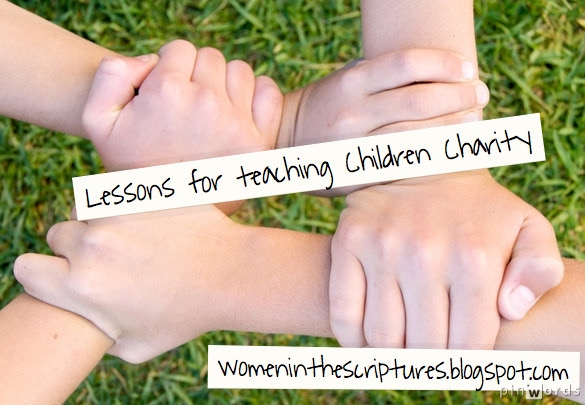
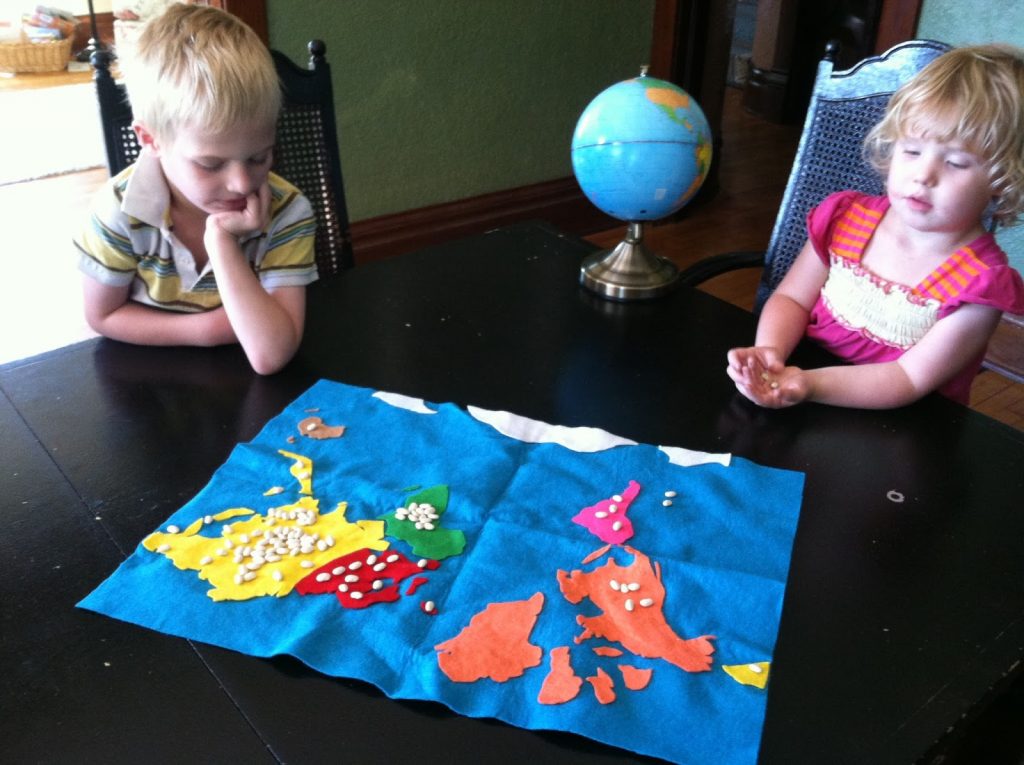
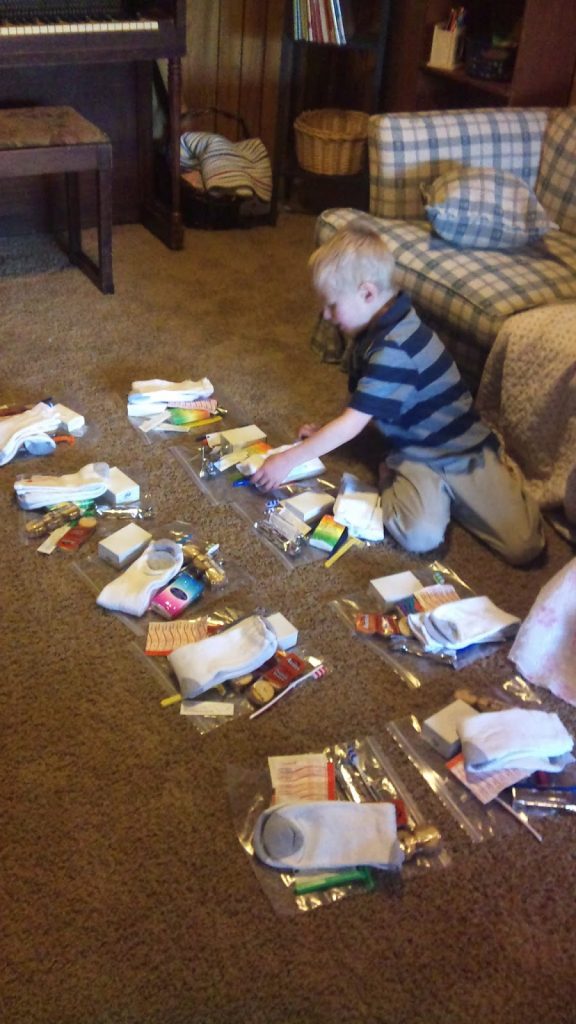
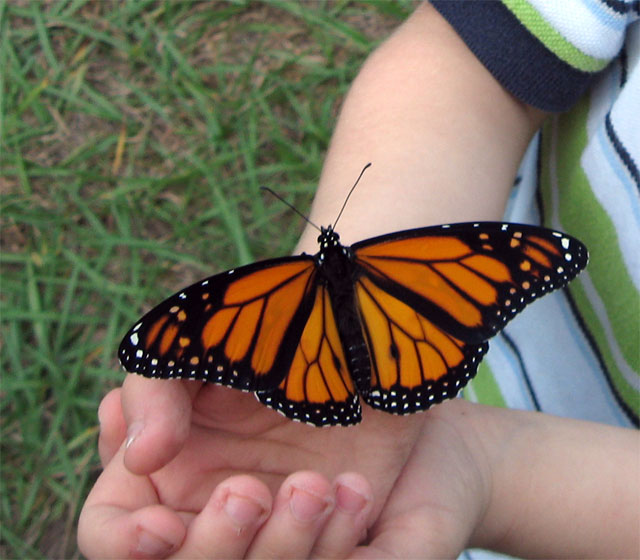
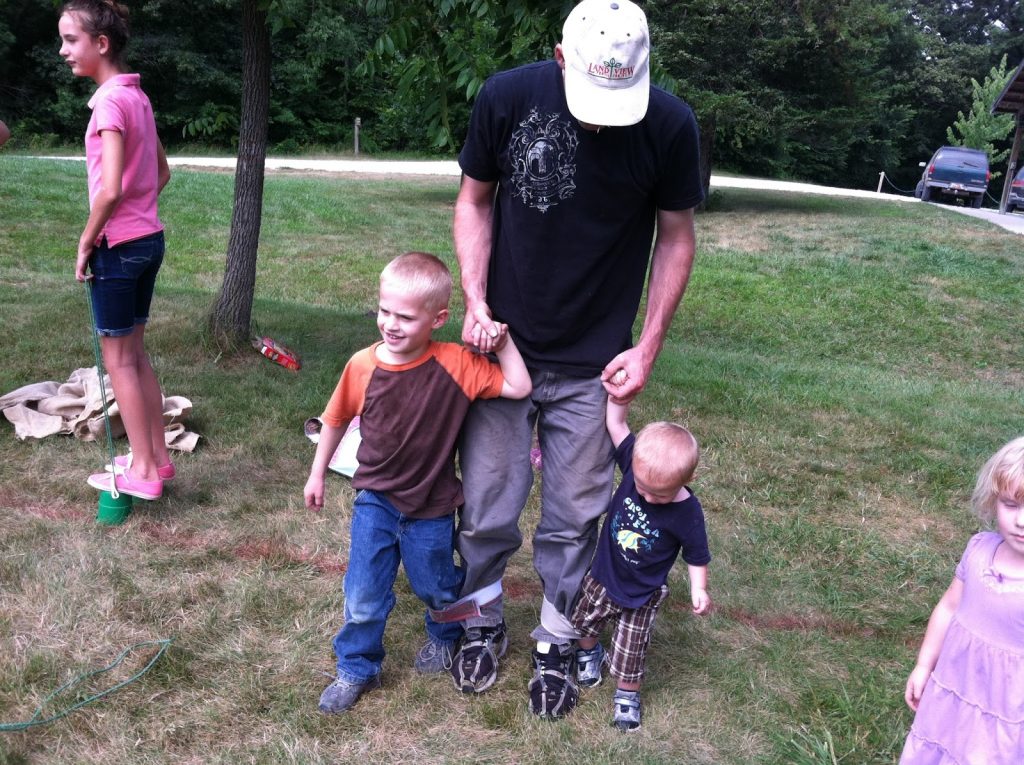
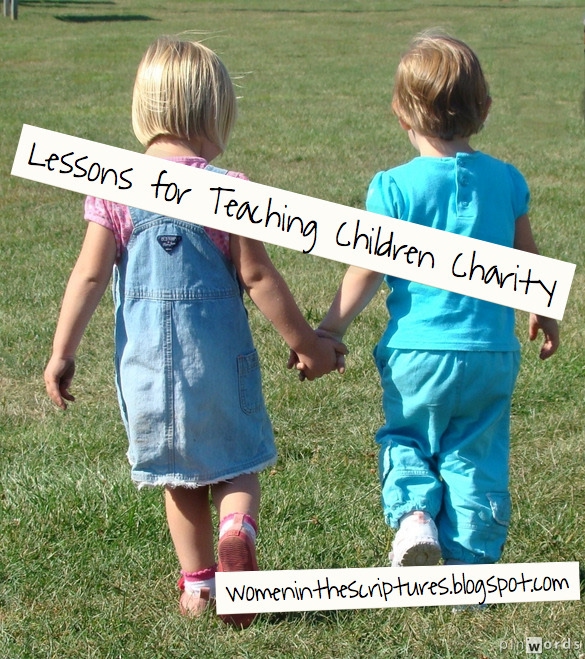




Have you considered putting these all together as a PDF or other form so we can easily download, print, and use your amazing lessons? I'd definitèly leave a tip! They're so worth ît and you do a great job!
Yes! I am planning on putting all of these together in a PDF when I get them all done. But I wanted to have them out there in case people want to use them in the meantime.
Heather, these are wonderful! I was going to leave the same question/suggestion as Amanda above. You could even load all the lessons into some book publishing thing like Create Space so people could buy copies (I'd totally pay for this!) in a book format. I can tell you've put so much time into these; would be nice if you made a little bit back:)
Excellent, thanks for sharing!! I'm going to do this with my kids. One idea I will add in with the Lazarus story is looking at these two books.: The Hungry Planet and Material World: A Global Family Portrait.
For The Hungry Planet, they traveled across the world and photographed families with all the food they eat in a typical week. For Material World, they traveled across the world and photographed families with all their possessions.
My library has The Hungry Planet so I've requested it. Both of these are on my Amazon wish list, though, because I think they will be a wonderful way for my children to visualize how blessed we truly are.
Thanks again for sharing!!